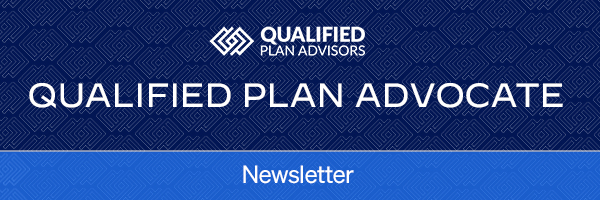Year-End Plan Sponsor Roundup
The end of the year is fast approaching. Many of you are tying up loose ends and hopefully preparing for some down time with your family and friends. With competition for your time and attention in mind, we wanted to close the year with a rapid-fire roundup of the retirement plan issues that have emerged over the last few weeks.
SECURE 2.0 Technical Corrections. A House Committee has released a “discussion draft” of a technical corrections bill that would clean up some of the inadvertent errors in the SECURE 2.0 Act of 2022. The most notable item in the draft would provide clarification that Congress did not intend to get rid of catch-up contributions. (You may recall that the SECURE 2.0 bill appeared to do so in its Roth catch-up contribution provisions.) This development is notable mostly because it reflects that Congress is aware of the need to perform some clean up.
SECURE 2.0 “Grab Bag”. Well . . . we’re still waiting. The IRS had forecasted that the Fall would bring some expansive interpretive guidance that would provide clarity around the most notable optional SECURE 2.0 provisions, such as the student loan debt matching contributions, emergency savings accounts, and Roth employer contributions. For the most part, the absence of guidance – and the initial focus on programming for higher-paid participants’ Roth catch-up contributions – led recordkeepers and payroll providers to hold off on their 2024 support for those optional SECURE 2.0 provisions. We know the IRS is working on the guidance and eager to provide it, but we don’t have a timeline.
LTPT Employee Regulation. On Black Friday, the Treasury dropped a proposed regulation that relates to the SECURE 1.0 and SECURE 2.0 requirements to permit “long-term, part-time” employees to participate in plans permitting employee deferrals. The proposed regulation is a bit of a nothing-burger, although it does provide some welcome clarity regarding the continuing ability to exclude a class of employees (provided that the exclusion is not an end run around hours requirements or otherwise violating any other prohibition on discrimination). The most important LTPT issue for plan sponsors is to ensure their payroll and recordkeeping systems are prepared for an influx of new savers in January.
“Fiduciary Rule” Hearings. Last month, we wrote about the DOL’s proposed “Retirement Security” regulation, which would clarify and expand the definition of fiduciary investment advice. On December 12 and 13, the DOL held public hearings, where it heard from interested parties with a variety of perspectives – including some who fear the proposal and some who fully embrace it. Assistant Secretary of Labor Gomez issued opening arguments that confirmed this key DOL goal: “to make sure that when individual retirement investors turn to investment professionals for sound advice rooted in their best interest, they get just that — advice that is prudent, loyal, candid, and free from overcharges.” That seems like a reasonable goal and one an advisor should embrace if he or she is to be able to work with your organization’s people.
Use of Forfeitures. In February, the Treasury issued a proposed regulation that would seek to clarify the purposes for which plan forfeitures could be used and the deadlines for using them. In the meantime, we’ve seen an increase in litigation alleging that a plan’s fiduciaries have impermissibly used plan forfeitures. While we wait for the Treasury to finalize its regulations, the primary step for plan fiduciaries is to ensure the Plan’s provisions expressly permit the use of forfeitures in the way they’re being used. The next step is to cause those forfeitures to be used as soon as practicable (recognizing that the final regulations will likely require that forfeitures be used no later than 12 months following the end of the plan year in which the forfeitures arose.
Closing Thoughts. This has been an interesting year in the area of plan compliance. As we look ahead to 2024, we’ll be closely monitoring each of the areas described above. We’ll also focus on three key participant resources that we expect to gain further momentum in 2024: financial wellness, advisor managed accounts, and in-plan income.
May you have a wonderful holiday season. If you’d like to talk about anything discussed above or any other aspect of how your plan might evolve, please do not hesitate to let us know.
– Matthew Eickman, J.D., AIF®

